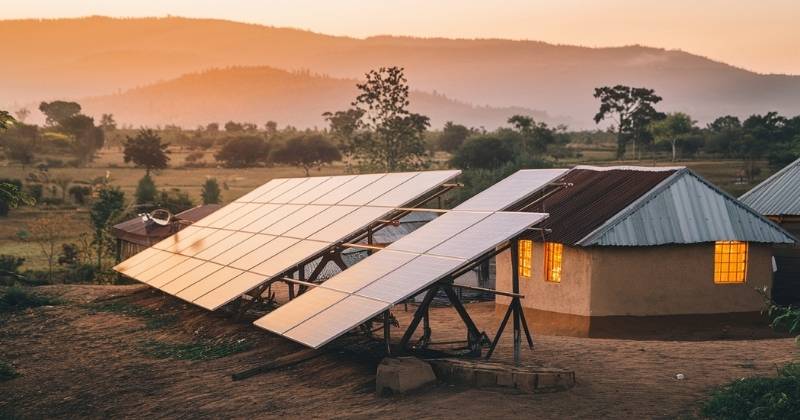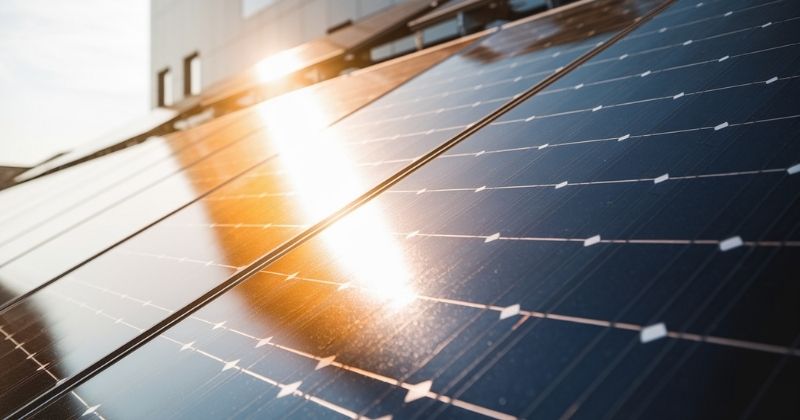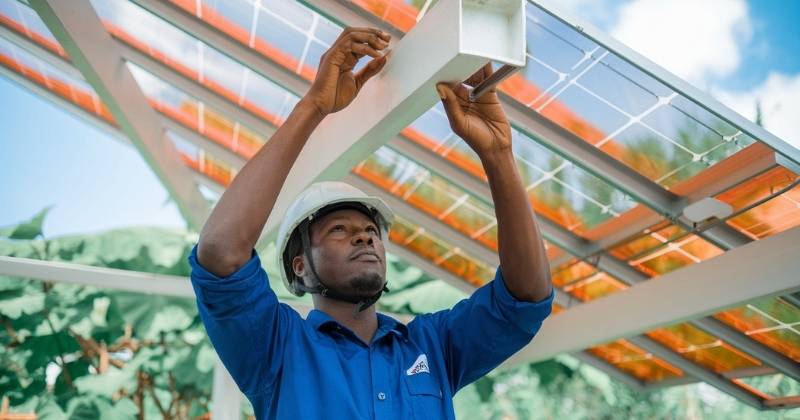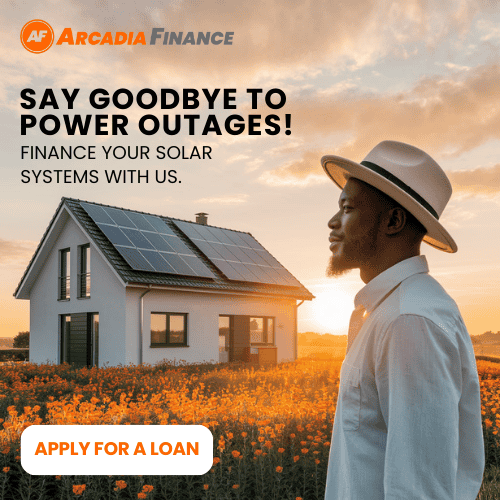
As South Africa continues to navigate its energy crisis, an increasing number of households and businesses have turned to solar power to mitigate the impact of power outages and high electricity costs. However, recent developments have sparked concern among solar users, particularly those with grid-tied systems. Eskom has begun enforcing new compliance measures, requiring additional approvals and specific equipment installations. Failure to meet these requirements may result in substantial fines.
Key Takeaways
- Eskom’s New Compliance Measures: The utility has introduced strict regulations requiring additional approvals and equipment installations, with heavy fines for non-compliance. Many believe this is more about controlling independent power generation than ensuring grid stability.
- High Costs of Compliance: Solar users may face expenses ranging from R27 000 to R50 000 to meet regulatory requirements, depending on municipal rules and installation standards. These costs could discourage further investment in renewable energy.
- Regulations vs. Renewable Energy Goals: While South Africa promotes renewable energy adoption, Eskom’s restrictions create barriers rather than incentives, raising concerns that independent solar power is being deliberately stifled.
Eskom’s Compliance Crackdown on Grid-Tied Solar Systems
In December 2024, Eskom initiated a widespread review of customers with grid-tied solar installations. The power utility has been visiting properties to assess whether existing systems meet the latest compliance standards. Homeowners and businesses with these systems have been informed that new approvals and additional components may be necessary to align with regulatory expectations.
These enforcement measures have raised concerns within the renewable energy sector, with many questioning the reasoning behind Eskom’s intensified scrutiny. The utility has stated that its primary concern is grid stability, as improperly installed systems or non-compliant inverters and batteries could negatively affect the national grid. Critics, however, argue that this sudden push for compliance is nothing more than a disguised effort to throttle private energy independence. With load shedding having been a persistent issue for years, many South Africans find it ironic that Eskom is now so invested in ‘stability.’
Before making the switch to solar, it’s crucial to understand the latest pricing trends. From budget-friendly options to high-end installations, knowing solar panel prices in South Africa ensures you make a cost-effective investment. Eskom’s changing regulations may influence costs, so staying informed is essential.

Understanding the Regulatory Landscape
The compliance requirements for solar installations vary depending on location, as different municipalities enforce their own regulations. South Africa has approximately 177 municipalities, each with distinct policies governing grid-tied solar connections. Eskom, as one of the country’s key utility providers, has its own specific rules that must be followed.
Given the inconsistencies in regulatory frameworks across municipalities, solar system owners must ensure that they adhere to the requirements of their specific electricity provider. In certain areas, such as George, authorities have required an approved architectural plan before granting registration approval, even though such documentation has little to do with the technical aspects of an electrical installation. This type of bureaucratic red tape has only added to frustrations, with many seeing it as an unnecessary obstacle designed to deter people from adopting solar power. Some homeowners have reported lengthy delays in receiving approvals, further fueling speculation that these regulations are less about safety and more about control.
As Eskom tightens its grip on solar regulations, homeowners need to be extra cautious about who they trust with their solar installation. A poorly chosen installer can leave you with non-compliant panels, unexpected fines, or even disconnection from the grid. Learn more about the risks and how to avoid them in Experts Warn That Picking the Wrong Solar Installer Could Cost You.
Unregistered Solar Systems Considered Illegal
Eskom has taken a firm stance, stating that any grid-tied solar system that is not officially registered is considered illegal, even if it does not feed excess electricity back into the grid. This has led to confusion and frustration among solar users who believed that simply using solar power for personal consumption would not require additional approvals.
The National Energy Regulator of South Africa (Nersa) has previously outlined in the Electricity Regulation Act that utility providers must report on generation capacity within their respective areas. This requirement is one of the driving forces behind Eskom’s decision to enforce strict compliance measures, as it seeks to maintain oversight of all power generation sources connected to the grid. Yet, many wonder if this oversight is truly about accountability or if it is a means to ensure Eskom retains its grip on the market. With independent energy generation increasing, some fear that stricter rules are being introduced to curb the momentum of decentralised power solutions.

The Impact of Solar Installations on Grid Stability
One of Eskom’s key justifications for its new regulations is maintaining grid stability. The utility has pointed to the NRS 097 standard, which sets limits on the size of solar photovoltaic (PV) systems and the rate at which batteries can be charged from the grid. These restrictions are designed to prevent excessive strain on the power network.
Poorly installed or substandard inverters and batteries could potentially disrupt the grid’s stability. The way in which these components are integrated into the system plays a critical role in ensuring that solar power can be harnessed safely without adverse effects on the broader electricity network. But many industry experts argue that these concerns, while valid, do not justify the level of intervention Eskom is pursuing. The sudden enforcement of these regulations, despite solar being widely adopted for years, has left many wondering whether Eskom’s true concern is safety or financial loss.
Power outages already cost households and businesses thousands in lost productivity, damaged appliances, and alternative energy expenses. The real cost of load shedding for South Africans is something every homeowner should calculate before deciding on a solar investment.
Who Is Affected by These Regulations?
The requirement to register a solar system applies to all users who are connected to the grid, regardless of whether they are residential or commercial customers. Larger commercial installations are typically subject to more stringent compliance measures and are more likely to have undergone proper registration processes.
For individual homeowners, the situation may be more complex, as many may not have been aware of the need for registration, especially if their systems were installed before Eskom’s recent enforcement actions. Those with smaller solar setups must now ensure that their systems meet the latest regulatory requirements to avoid potential penalties. The crackdown has left many questioning whether Eskom is targeting ordinary citizens instead of large corporations, many of which have private energy solutions that seemingly escape this level of scrutiny.
The Cost of Compliance
One of the major concerns raised by solar users is the financial burden associated with ensuring compliance. Reports indicate that the cost of meeting Eskom’s requirements can range between R27 000 and R50 000, depending on various factors.
These costs largely depend on municipal regulations and the quality of the initial installation. In some areas, compliance may be as simple as obtaining a Certificate of Compliance (COC) and an engineer’s sign-off. However, in other cases, additional approvals and engineering assessments may be required.
For example, the City of Johannesburg’s electricity utility, City Power previously allowed electricians to sign off on systems up to 30 kilowatts, reducing the need for costly engineer approvals. However, more recent changes in requirements have resulted in higher compliance costs, particularly for homeowners and small businesses that must now secure professional engineering assessments. This has led to speculation that Eskom’s real motive is to make solar adoption more expensive, discouraging people from becoming less reliant on the national grid. With so many South Africans struggling financially, the added costs could force many to abandon their solar aspirations altogether.
Do These Regulations Align with South Africa’s Renewable Energy Goals?
A broader question that has emerged is whether Eskom’s regulatory measures are in line with South Africa’s long-term energy strategy. The country has been actively promoting renewable energy adoption to reduce dependence on Eskom’s struggling power grid, yet these new restrictions and costly compliance requirements may discourage further solar investment.
The government’s Integrated Resource Plan outlines strategies for ensuring energy resilience, and a stable grid is undoubtedly a key component of this vision. However, critics argue that excessive red tape and high costs may hinder rather than support South Africa’s transition to a more sustainable energy future.
The Future of Solar in South Africa: Progress or Protectionism?
The enforcement of Eskom’s new solar regulations has placed significant pressure on homeowners and businesses that have invested in grid-tied solar systems. While Eskom maintains that these measures are necessary to protect the stability of the national grid, the financial and administrative burden on solar users has sparked frustration.
With varying municipal regulations, costly compliance measures, and ongoing concerns about South Africa’s energy future, it remains to be seen how these policies will impact the broader adoption of solar power in the country. South Africans considering solar energy solutions must now carefully navigate these regulatory challenges to ensure they remain compliant while benefiting from renewable energy alternatives. Yet, with more hurdles being placed in their way, one must ask, who truly benefits from these regulations: the people or Eskom?
Conclusion
Eskom’s crackdown on grid-tied solar systems has sparked intense debate over whether the new regulations genuinely prioritise grid stability or serve as a means of maintaining control over the country’s energy supply. While compliance and safety are important, the high costs and bureaucratic obstacles could deter homeowners and businesses from investing in solar energy, ultimately contradicting South Africa’s broader renewable energy goals. If independent power generation continues to face regulatory roadblocks, the country risks missing a crucial opportunity to decentralise electricity production and ease pressure on an already overburdened grid.
Fast, uncomplicated, and trustworthy loan comparisons
At Arcadia Finance, you can compare loan offers from multiple lenders with no obligation and free of charge. Get a clear overview of your options and choose the best deal for you.
Fill out our form today to easily compare interest rates from 19 banks and find the right loan for you.



